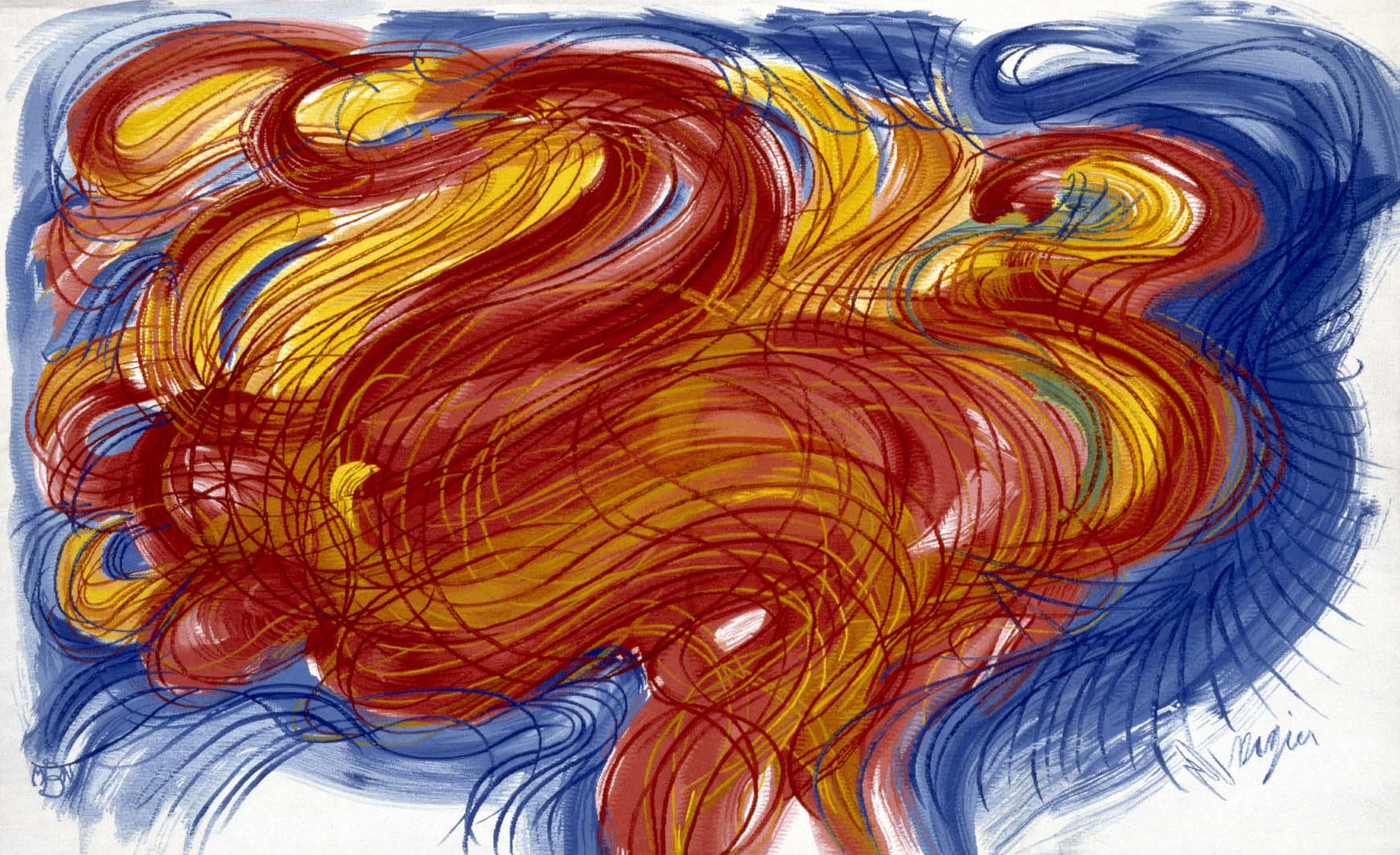Abstraction and Movement
 Jean Messagier, Flammes rouges (Red Flames), designed 1970, woven September 1, 1969–February 3, 1971, cotton and wool. Mobilier national, Paris, France, BV-200, © Artists Rights Society (ARS), New York / ADAGP, Paris. Photo: Philippe Sébert
Jean Messagier, Flammes rouges (Red Flames), designed 1970, woven September 1, 1969–February 3, 1971, cotton and wool. Mobilier national, Paris, France, BV-200, © Artists Rights Society (ARS), New York / ADAGP, Paris. Photo: Philippe SébertStarting in the late 1950s, designs for tapestries became increasingly more abstract. In 1962, the Lausanne International Tapestry Biennial in Switzerland was launched to showcase contemporary tapestry and other fiber arts from around the world. Traditional tapestry remained a staple of the French portion of these shows, with French artists and weaving workshops focusing more on evolution of design than technique. In 1969, all the submissions in the French section of the show were traditionally woven tapestries of abstract design.
Abstraction manifests in different ways in the examples shown here. Many of them create an illusionistic sense of three–dimensional depth while others create a sense of fluid movement across a flat surface. These works also demonstrate the importance of color in creating powerful visual effects. For each tapestry, a specific palette of colors is determined prior to weaving, often through discussion between the artist and the head weaver, and an expert dyer then oversees the process of custom dying the weft threads according to the number of individual colors needed and the length of threads required for each color.
